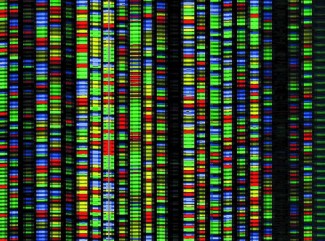Bassem Hassan’s team at VIB/KU Leuven has discovered a previously unknown mechanism that is highly conserved between species and which regulates neurogenesis through precise temporal control of the activity of a family of proteins essential for brain development: the proneural proteins. This mechanism, a simple reversible chemical modification, is critical for the production of a sufficient number of neurons, their differentiation and the development of the nervous system. Bassem Hassan currently works at Institut du Cerveau - ICM.
Our nervous system is made up of an astonishing diversity of neurons. And yet only a very small number of proteins are needed to generate and determine the identity of these billions of neurons. An even smaller number of proteins, called proneural proteins, initiate and regulate brain development and neurogenesis (i.e. the manufacture of functional neurons from neural stem cells). These proneural proteins are transcription factors, meaning they control the expression of other proteins.
They are expressed very transiently during early neurogenesis. A key aspect of this system that remains to be elucidated is the precise temporal regulation of the activity of the proneural proteins and the manner in which this regulation contributes to neural differentiation. How does a very small set of proteins expressed over a very limited period of time control the generation of such a high and diverse number of neurons? What are the causes and effects of the transient expression of these proteins? And finally, is this mechanism, which enables the development of the nervous system, conserved between species?
Previous studies in Drosophila, or fruit flies, and in mice have shown that the expression of proneural proteins begins at very low levels in neural stem cells, thereafter increasing by self-activation. This sudden increase stops very quickly. The activity of proneural proteins thus has two characteristics: significant amplitude – easily explained by auto-activation – and a limited duration. How can a protein that auto-activates its own expression disappear at the peak of that expression? The results suggest the existence of an unknown mechanism that overrides the auto-activation and synchronises the amplitude and duration of proneural protein expression.
To answer these questions, Bassem Hassan’s team studied the control and the mechanism of proneural protein expression during retinal development in Drosophila. The proteins in question control the differentiation of retinal neurons from neural stem cells.
The researchers discovered a binary "all-or-nothing" mechanism that can inactivate proneural proteins: a reversible chemical modification (phosphorylation) in a part of the protein that is highly conserved among different species, from fruit flies to mice to humans. It is this mechanism that enables the establishment of a network of functional neurons.
In fact, the suppression of this phosphorylation alters the activity of proneural proteins, causing changes in the expression of target genes, which prevents normal brain development. These changes interfere with signaling between neurons and have a negative impact on their number and diversity. Interestingly, the inhibition of this "all-or-nothing" mechanism produces quantitative changes in the expression of target genes. The delicate and precise temporal control of neurogenesis is seemingly regulated by the balance between quantities of active and inactive proneural proteins.
These results, confirmed in another experimental model, thus reveal the existence of a mechanism that is both highly conserved between species and universal, and which regulates neurogenesis and the generation of a sufficient and diverse number of neurons during brain development.
Mutations that prevent this chemical modification cause diseases that affect the development of the nervous system. The elucidation of the mechanism could therefore eventually enable the development of therapeutic solutions. Moreover, throughout their lives, adults generate new neurons that help maintain all their cognitive abilities and play a key role in memory. Understanding the role of this mechanism during neurogenesis in adults would open up a promising pathway in the fight against degenerative diseases.
Sources
Post-translational Control of the Temporal Dynamics of Transcription Factor Activity Regulates Neurogenesis.
http://www.cell.com/cell/abstract/S0092-8674(15)01712-2







